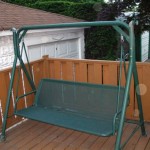Small Patio Vegetable Gardens: Essential Aspects for Success
Small patio vegetable gardens are a fantastic way to bring fresh produce to your table, even if you don't have a large yard. With careful planning and maintenance, you can grow a variety of vegetables in a small space. Here are some essential aspects to consider when creating and maintaining a small patio vegetable garden:
1. Site Selection
The first step is to choose the right location for your garden. Patio gardens typically receive full sun, which is ideal for most vegetables. However, if your patio is fully shaded, you can still grow vegetables by choosing shade-tolerant varieties or using grow lights.
2. Size and Containers
The size of your garden will depend on the space available on your patio. If you have a small patio, you can grow vegetables in containers. Choose containers that are large enough to accommodate the root systems of the plants you want to grow. You can also use raised beds, which are a good option for patios with limited sun exposure.
3. Soil Preparation
Good soil is essential for healthy vegetable plants. Fill your containers or raised beds with a well-draining potting mix. Add organic matter, such as compost or manure, to improve soil fertility and drainage. It is recommended to test your soil before planting to determine its pH and nutrient levels.
4. Plant Selection
When choosing vegetables to grow in your small patio garden, consider the size of the plants and their sun requirements. Some good options for containers include tomatoes, peppers, cucumbers, strawberries, herbs, and leafy greens. If you have a raised bed, you can also grow larger vegetables such as zucchini, carrots, and beans.
5. Watering
Watering is crucial for the success of your small patio vegetable garden. Water your plants deeply and regularly, especially during hot and dry weather. Avoid overwatering, as this can lead to root rot. Use a watering can or drip irrigation system to deliver water directly to the roots of the plants.
6. Fertilizing
Fertilize your plants every few weeks with a balanced liquid fertilizer. This will help to ensure that they have the nutrients they need to produce healthy fruit and vegetables. Follow the instructions on the fertilizer label for proper application rates.
7. Pest and Disease Control
Pests and diseases can be a problem in any garden, but they can be especially damaging in small patio gardens. Keep an eye on your plants for signs of pests or diseases, and take immediate action to control them. Use organic pest control methods whenever possible.
8. Support and Trellising
Some vegetables, such as tomatoes and cucumbers, need support to grow properly. Use stakes, cages, or trellises to provide support for these plants. Trellising can also help to maximize space in small gardens.
9. Harvesting
When your vegetables are ripe, harvest them promptly. This will encourage the plants to produce more fruit. Handle your vegetables carefully to avoid bruising or damage.
Small patio vegetable gardens are a great way to enjoy fresh, homegrown produce. With careful planning and maintenance, you can create a productive and beautiful garden that will provide you with years of enjoyment.

Small Vegetable Garden Ideas Gate

Patio Vegetable Garden Setup And Tips To Get Growing

Create A Patio Vegetable Garden Gardener S Supply

Patio Vegetable Garden Setup And Tips To Get Growing

Small Vegetable Garden Ideas 15 Ways To Maximize Your Space

Small Vegetable Garden Ideas Tips Design

Dammann S Garden Company Save Space With Container Vegetable Gardening

How To Create A Patio Vegetable Garden With Planters Pots

Small Vegetable Garden Ideas Gate

87 Cute And Simple Tiny Patio Garden Ideas Roundecor Apartment Herb Gardens Small Balcony








